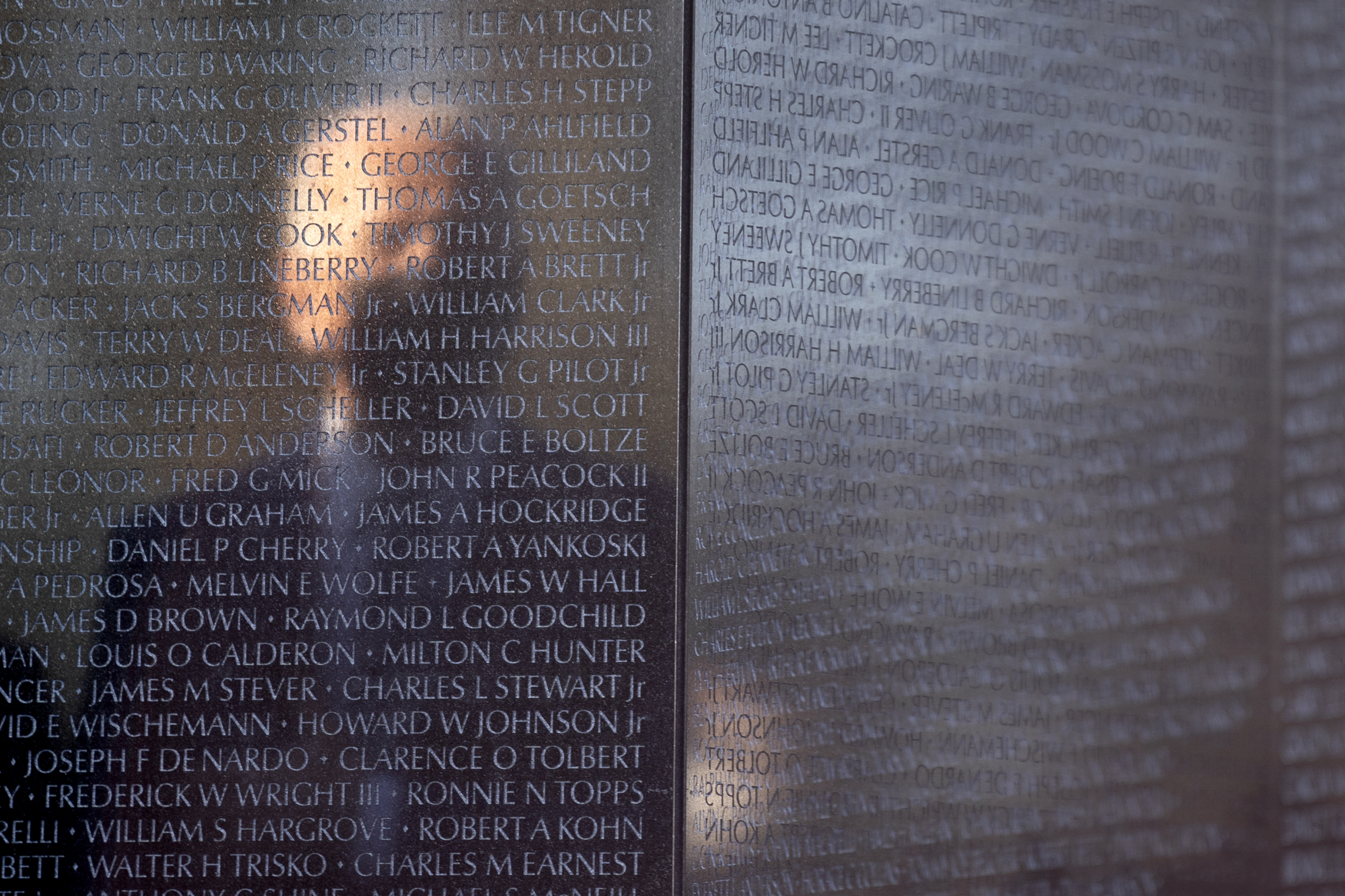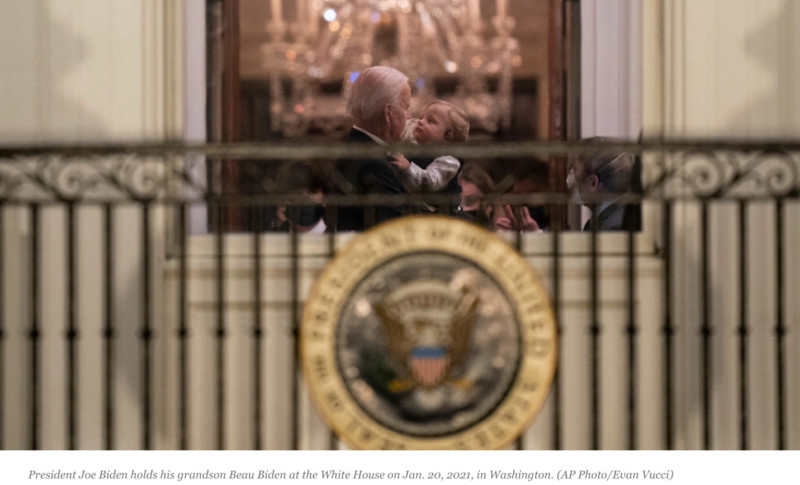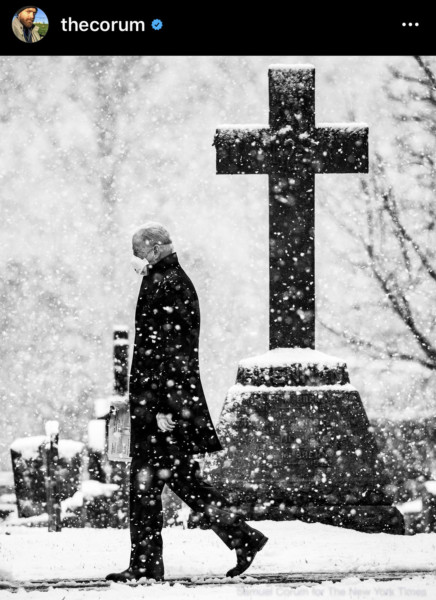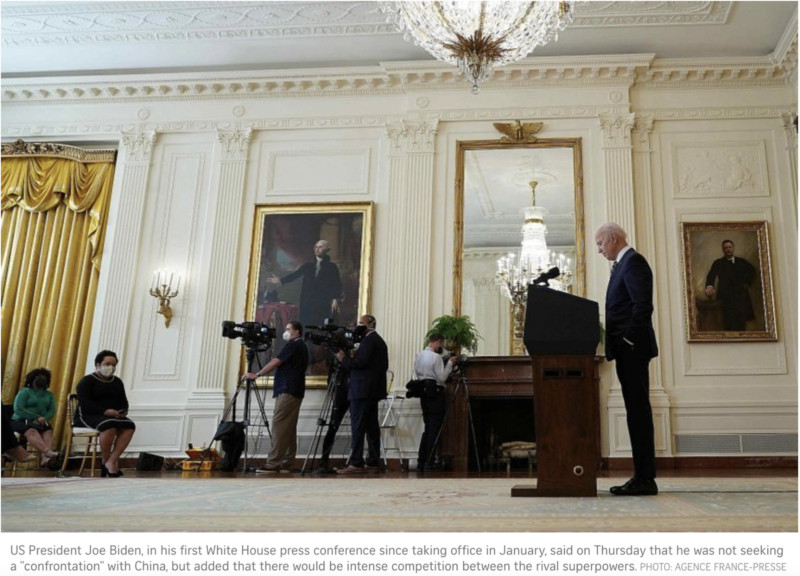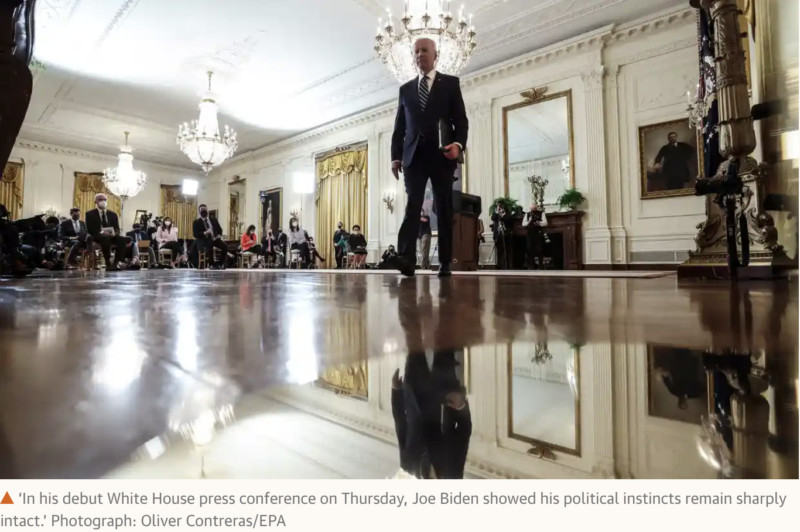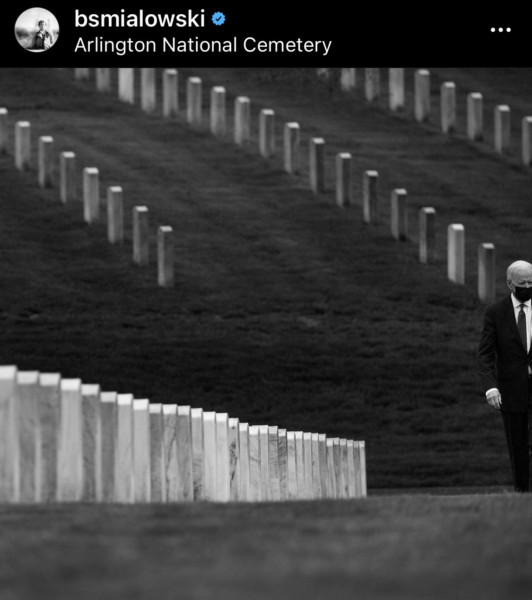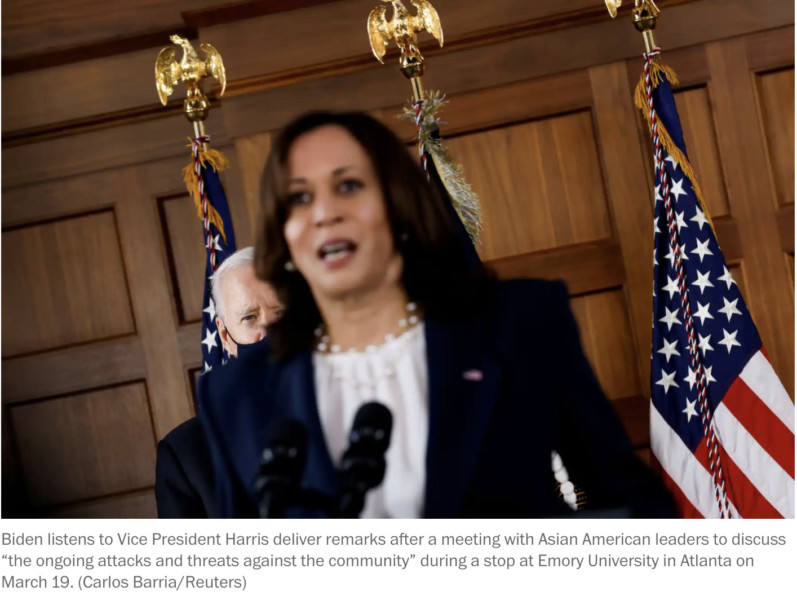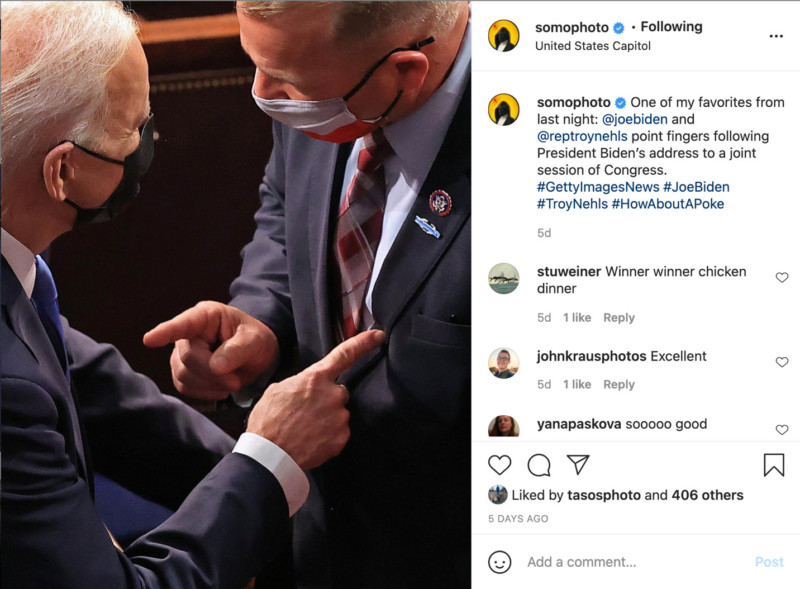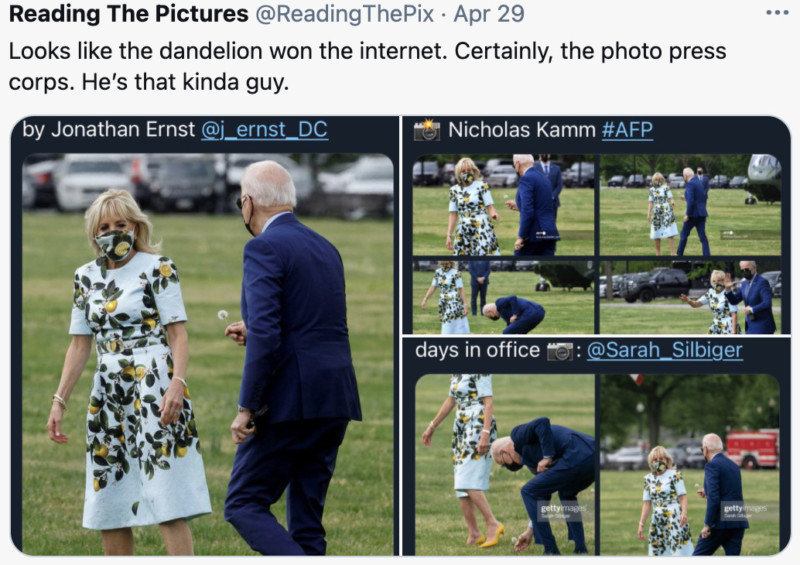Sign up for the daily CJR newsletter.
After Joe Biden won the presidency, his long history in the spotlight, and a demeanor that starkly opposes his predecessor, raised many questions about what types of visuals his presidency would produce. Would Biden be hampered by years of gaffes and quirky photo-ops? To what extent would health precautions under Covid-19 limit his visual impact? How well would Biden marshal the power of imagery, especially in the depths of crisis? And, after Donald Trump’s domination of the photo lens and the mediascape, how much and how well would Biden fill out a frame?
So far, the early visual returns have been positive. Biden’s political photo history is well known to be frivolous or embarrassing. After four years of Trump’s bombast, omnipresence, and his dismissal or politicizing of major issues, however, Biden’s low profile and appeal to facts and compassion seemed to have earned him a reset.
Biden’s early legislative and administrative successes against the virus have translated into winning, even commanding, scenes. His limited exposure, message discipline, and appeals to compassion seem to have opened the lens to themes of decency and care.
More than any other inauguration image, this photo by the Associated Press’s Evan Vucci signaled that the United States was no longer in Trump’s grip. Marking the transfer of power, the photo introduces intimacy and selflessness as new coins of the realm.
Trump was preoccupied by the power and luster of the office, and his own reflection. This picture epitomizes the opposite. It is candid, as opposed to staged. The mirror is prominent, yet incidental, and the grand chandelier and presidential seal are out of focus. And when did you ever see anyone else in Trump’s eyes?
The big question at the outset of Biden’s presidency was his ability to lead the country out of the Covid crisis. Was he the right man for the job?
Taken in Biden’s third week in office, Samuel Corum’s portrait for the New York Times captures the president passing by an enormous cross in a snowstorm. The scene of Biden walking through the graveyard of his church in Delaware after Sunday mass projects a steadfast faith and momentum in taking on a virus that, mismanaged by his predecessor, had already cost America over a half-million lives.
Biden’s first press conference, two months into his tenure, was highly anticipated. The dignity of the imagery again proved notable as Biden touted the successful passage of his $1.9 trillion American Rescue Plan. Taken from the more stately side angle, this photo by Jim Watson for Agence France-Presse positions Biden between George Washington and Theodore Roosevelt, while his hands-in-the-pocket gesture is reminiscent of John F. Kennedy.
Perhaps the most powerful, and certainly most artful, shot of Biden’s first press conference was taken as he exited the room. Using the floor as a mirror, the image by Oliver Contreras for European Pressphoto Agency equates Biden’s success with an image of walking on water.
In many other photos, Biden has a lower profile and marginal placement. They indicate a quiet command, or the mark of a steward mindful of goals and principles much greater than himself. Take, for example, this impressionistic image in Arlington National Cemetery, by Brendan Smialowski, a photographer for Getty Images.
This image of Biden standing behind Kamala Harris on March 19 demonstrates a similar dynamic. Taken by Carlos Barria for Reuters, it was featured in a Washington Post summary of the highlights of President Biden’s first hundred days in office.
In the past, the scene of Biden obscured would have seemed typical, even deprecatory. In the current atmosphere, however, it’s as reflective of Biden’s humility as it is indicative of the respect, weight, and responsibility Biden has given his vice president.
After Biden addressed Congress in a joint session on April 28, Getty’s Chip Somodevilla featured an image on his Instagram page, taken on the House floor after his speech. Biden and Troy Nehls, a conservative representative from Texas, are seen pointing fingers at each other. It seems antagonistic.
But the photo actually demonstrates that Biden’s efforts at bipartisanship––or else, his leveraging of the concept to splinter the GOP opposition––is showing some return. According to the Washington Post, Nehls, a former sheriff who voted against the certification of the presidential election results, was communicating his desire to help Biden on criminal justice reform.
The following morning, Biden and the First Lady crossed the White House lawn to Marine One. The couple was departing for a one-day trip to Georgia to promote Biden’s legislative agenda. Suddenly, in the middle of the lawn, Biden stopped and picked Jill Biden a dandelion. The moment captured the fascination of the photo pool, and the gesture lit up social media.
The history of White House news photography is filled with incidental scenes that plumb deeper qualities. In this case, it seems like Biden’s gesture drew wide attention for the way it captured any number of characteristics––compassion, thoughtfulness––that in Washington, at least, had been in short supply.
There is no way of telling how Biden’s term and the visual narrative will progress from here. At least for the moment, however, Biden’s character, and how it informs his political nature, seems to be taking center stage.
Has America ever needed a media defender more than now? Help us by joining CJR today.



